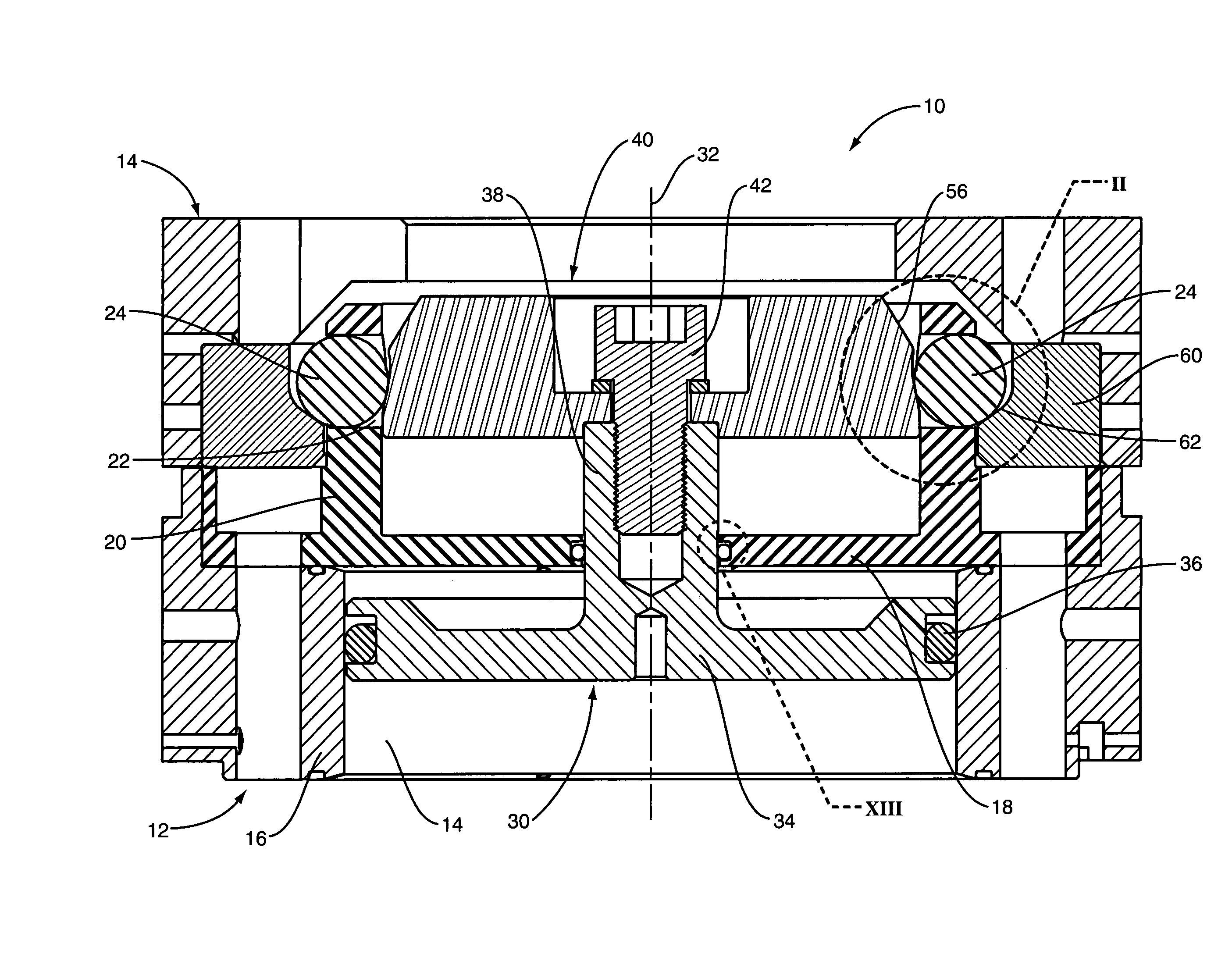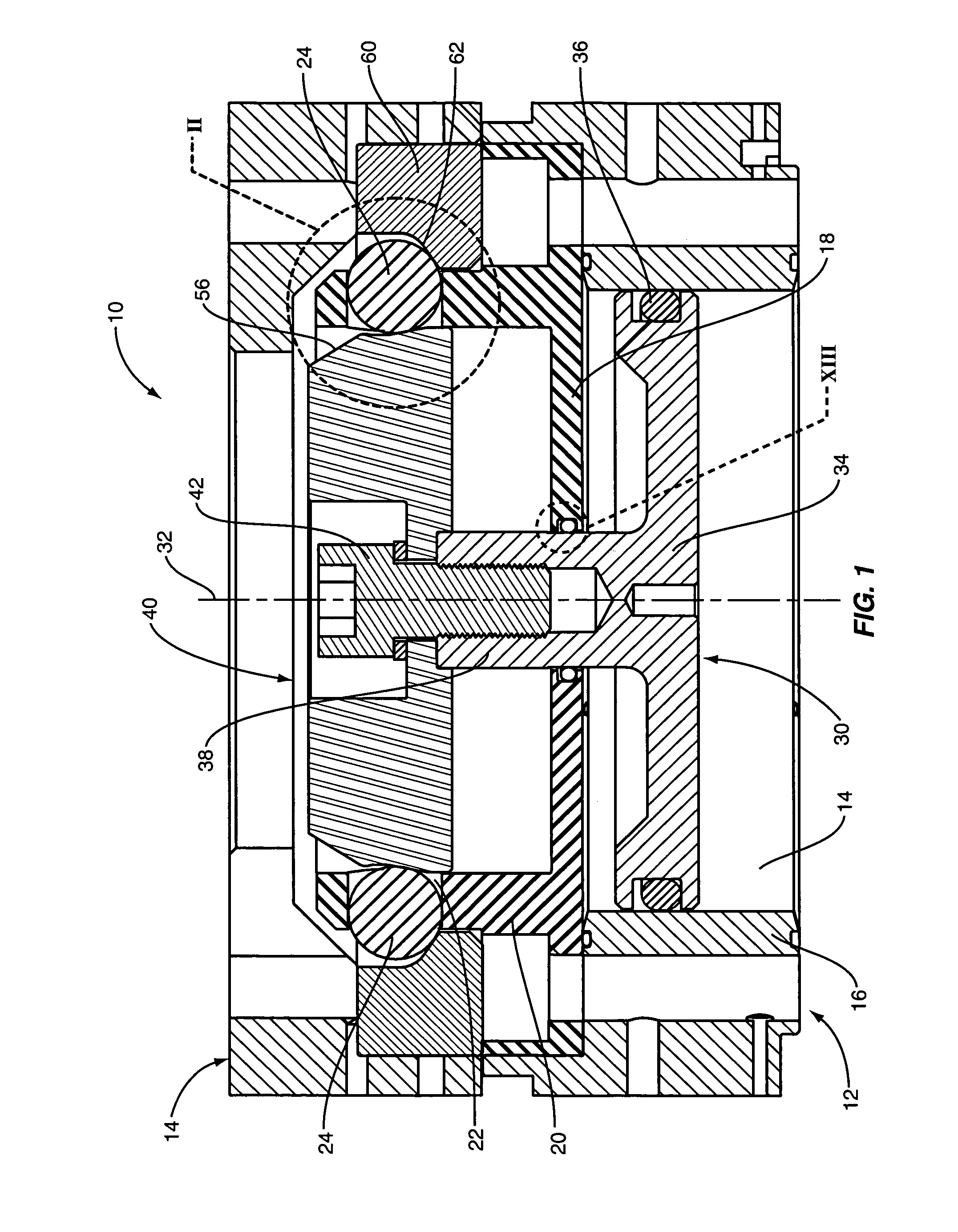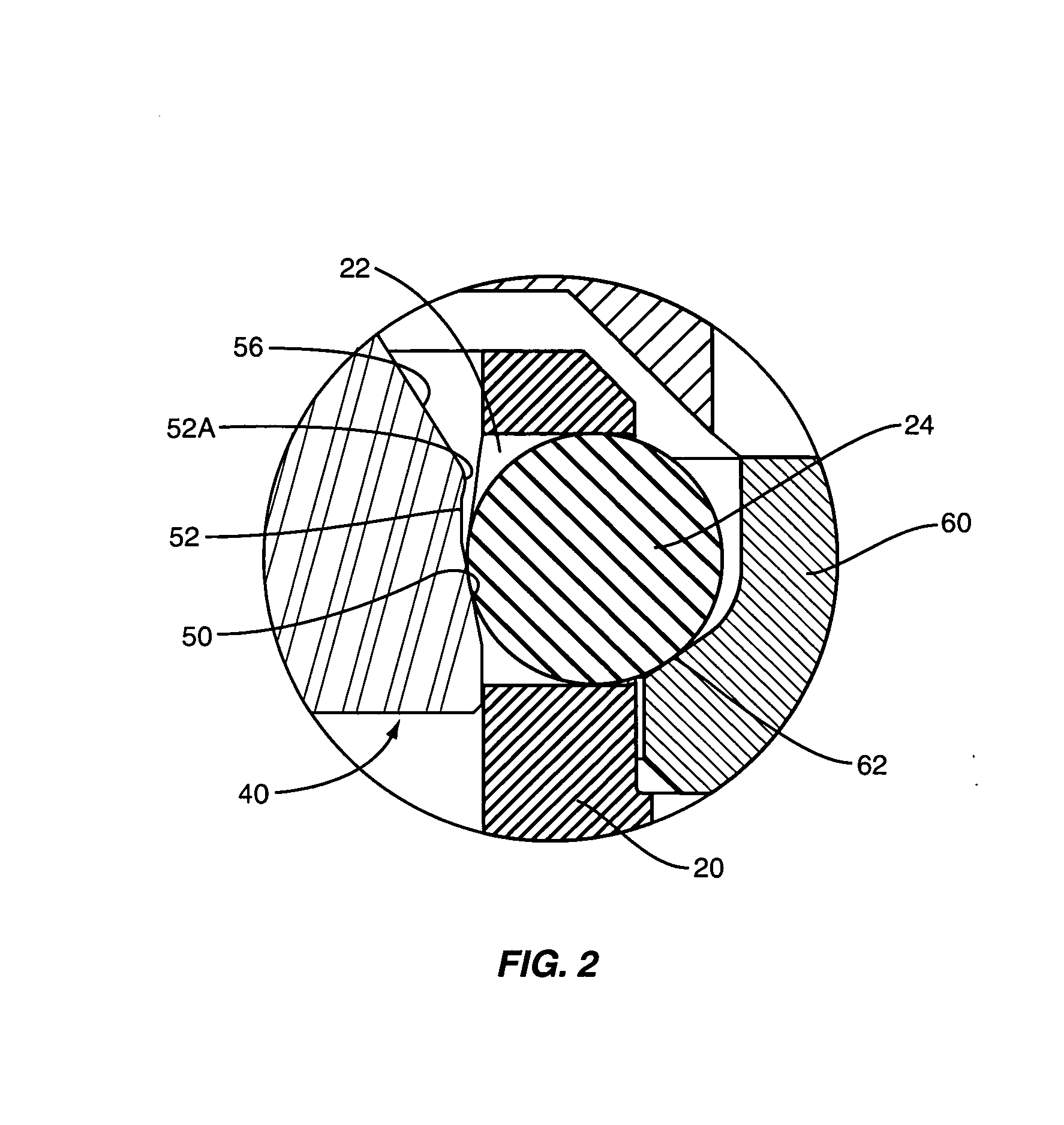Robotic tool changer
a tool changer and robot technology, applied in the field of robot tool changers, can solve problems such as the accidental movement of the piper past the failsafe position
- Summary
- Abstract
- Description
- Claims
- Application Information
AI Technical Summary
Benefits of technology
Problems solved by technology
Method used
Image
Examples
second embodiment
[0036] In FIGS. 8-11C, a second embodiment is shown for the contact area of the head 40 of the piston 30. In the embodiment shown in FIG. 1, the failsafe surface 52 comprised a ridge disposed between the locking surface 50 and the contact or unlocking surface 56. In this embodiment the failsafe surface 52 forms a generally conical shape surface between the locking surface 50 and the contact or unlocking surface 56. That is, as viewed in FIGS. 11A and 11B, the failsafe surface 52 extends upwardly and slightly outwardly to a point where the failsafe surface joins the contact or unlocking surface 56. If the failsafe surface 52 is projected downwardly around the piston 30, the projecting lines would form a cone. As seen in FIG. 11A, as the piston moves from the locked position shown in FIG. 8 to the unlocked position shown in FIG. 10, it is seen that the conical surface 52 retards the movement of the piston and gives rise to at least a slight resistance to the movement of the piston. Ef...
third embodiment
[0041]FIG. 12 illustrates the contact area of the piston head 40. In this case, the failsafe surface 52 includes two portions. First there is a generally cylindrical portion 52B and a second conical portion 52A. This design is similar to the embodiment shown in FIGS. 1-7B with the exception that the conical surface 52B assumes the position of the ridge in the embodiment of FIGS. 1-7B. In any event, in this embodiment, as the piston 30 moves from the locked position to the unlocked position, the rolling members will first engage the cylindrical portion 52B of the failsafe surface, and thereafter will engage the conical or angled surface 52B. Again, the conical or angled surface 52B will retard the movement of the piston 30 and prevent the piston 30 from inadvertently or accidentally moving past the conical or angled surface 52B to the unlocked position.
[0042] There are other ways to retard the movement of the piston from the failsafe position to the unlocked position. In FIG. 13 a po...
PUM
| Property | Measurement | Unit |
|---|---|---|
| angle | aaaaa | aaaaa |
| retention area | aaaaa | aaaaa |
| movement | aaaaa | aaaaa |
Abstract
Description
Claims
Application Information
 Login to View More
Login to View More - R&D
- Intellectual Property
- Life Sciences
- Materials
- Tech Scout
- Unparalleled Data Quality
- Higher Quality Content
- 60% Fewer Hallucinations
Browse by: Latest US Patents, China's latest patents, Technical Efficacy Thesaurus, Application Domain, Technology Topic, Popular Technical Reports.
© 2025 PatSnap. All rights reserved.Legal|Privacy policy|Modern Slavery Act Transparency Statement|Sitemap|About US| Contact US: help@patsnap.com



